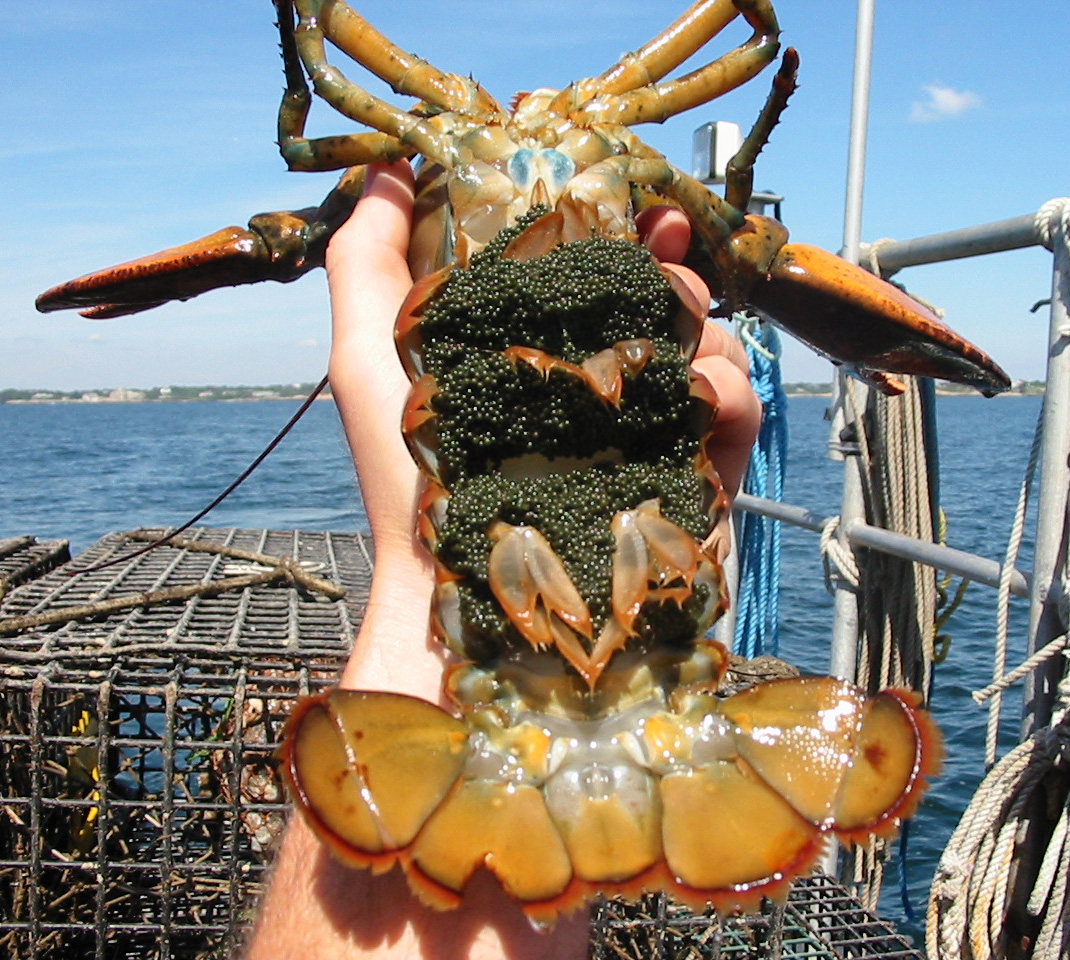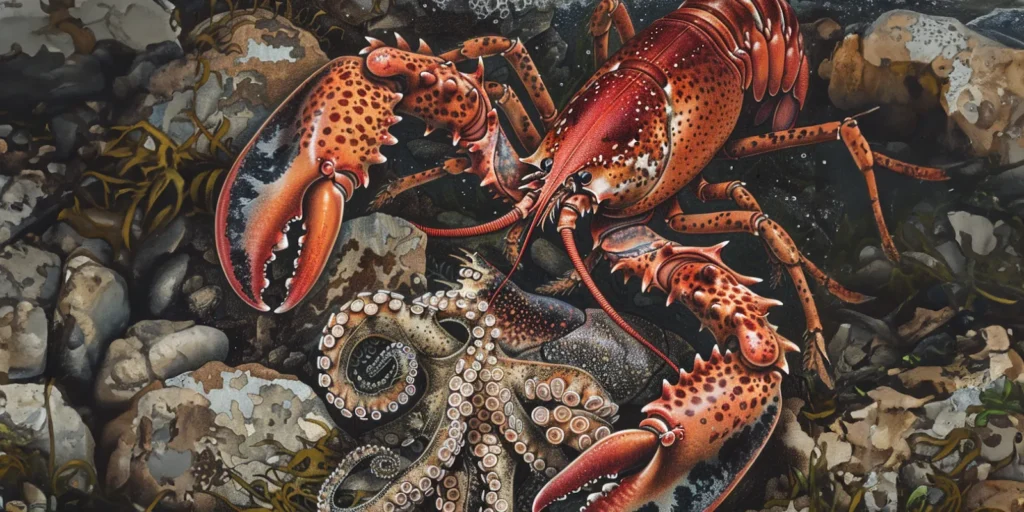
How To Tell If A Lobster Is Female or Male
You can usually tell the difference between a male and a female lobster simply by looking at the tail. The tail of a female lobster is wider than a male lobster’s tail, because she needs a larger surface area on which to attach her eggs. Female and male lobsters both have small appendages on the underside of their tails, referred to as pleopods, or more commonly, swimmerets. The swimmerets of a female lobster more closely resemble feathers and are much softer, whereas the swimmerets of a male lobster are rigid. While both female and male lobsters are an excellent source for delicious meat, some believe female lobsters are superior to males because of their more decadent and luxurious tail meat. Others consider the male lobsters’ claw meat to be tastier than the female’s. Order fresh lobster from ShopLobster and decide for yourself!
How Many Lobster Eggs Can a Female Lobster Carry at a Time?
The role of the mother is vital for any species, and it’s no different for lobsters. But we humans don’t know much about the lifecycle of a lobster (or most other marine crustaceans, for that matter). At ShopLobster, we are committed to cultivating a better understanding of how lobsters live and what we can do to maintain a sustainable lobster population in Maine. Female lobsters carry their eggs externally, on the underside of their tail. The female lobster secretes a unique sticky fluid that she uses to keep the eggs attached to her spinnerets for a period of 9 to 12 months. To keep her fertilized eggs oxygenated and safe from debris, a mother lobster uses her swimmerets to fan them. A 1-pound female lobster can carry up to 8,000 eggs. A 9-pound lobster, at more than 50 years of age, is still fertile and can carry more than 100,000 fertilized eggs under her tail. Once the time is right, the eggs are released into the water for hatching. During the first larval stage, the young lobsters stay buoyant in the water column for a couple of weeks before moving to the ocean floor to find protection in rocks, seaweeds, or grassy areas. There, the post-larval lobsters continue to develop into juvenile lobsters and molt as many as 20 to 30 times before reaching adulthood, which can take 5 to 8 years, depending on the water temperature. In Maine, any female lobster that is caught with visible eggs must be returned to the sea, with no exceptions. Before throwing her back, the lobster fisherman is obligated to put a notch in her tail that forever marks her as a protected breeder.
Why Does It Matter?
Understanding the life cycle of any creature is critical to sustainable production. At ShopLobster, we are dedicated to providing Maine lobster fans with valuable information on how to protect the Maine lobster populations, along with a better overall understanding of how they fit into the marine ecosystem. We are also committed to providing a truly authentic ‘ocean-to-plate’ experience, and that’s why our live lobsters are wild-caught sustainably off the coast of Maine. Love fresh, live lobsters? Explore our selection of premium Maine lobster in our Shop, and share this tasty meal with your friends and family at home.
Protecting the Future with Sustainable Lobster Fishing
Maine lobster is famous worldwide as one of the best types of seafood because of its distinctive taste, relative abundance, quality, and consistent availability year after year. But, while enjoying the delectable crustacean for dinner is a delicious indulgence, it’s a good idea to remind ourselves of some of the best practices associated with sustainable lobster fishing and consumption that will keep lobster populations healthy and allow us to continue to enjoy our favorite Maine treats for years to come.
- Limit the number of licenses awarded to fishing vessels.
- Impose a trap quota system that limits the total commercial catch each year.
- Adhere to rigorous regulations like lobster size limitations and trap vents which allow juvenile lobsters to escape.
- V-notch shells to protect egg-bearing and known viable mothers.
- Develop and utilize low-impact lobster fishing equipment to protect and preserve the health of our natural marine ecosystems.
- Modify fishing gear to reduce unintended bycatch and protect vulnerable non-target marine species, such as whales.
- Patronize certified dealers and look for products stamped with either the Marine Stewardship Council (MSC) logo or other accreditations from organizations like National Oceanic and Atmospheric Administration (NOAA) Fisheries or Responsible Fisheries Management (RFM).
In Maine, lobster fishermen are subject to rigorous and forward-thinking regulations to protect the lobster population and the marine ecosystem. To learn more about this, please visit our Sustainability page.
How To Tell If a Boiled Lobster Was Alive or Dead
A dead lobster, as you may guess, doesn’t feel anything when cooking, and its tail will remain in its position when plunged into boiling water. A live lobster, on the other hand, will curl its tail under the body when plunged into boiling water. The tail will remain in that position during and after cooking. At ShopLobster, we take pride in offering our customers the freshest and most sustainably caught live lobster straight to your table. This ensures that not only will the lobster delivered straight to your door have the best taste and quality, but you can enjoy with peace of mind that only comes along with avoiding long-dead and frozen lobster that is not prepared to ShopLobster’s high standards.
Are Lobsters Nutritious?
Lobsters are an excellent source of proteins, vitamins B-12 and B-6, omega-3 fatty acids, magnesium, potassium, iron, zinc, Selenium, copper, and calcium. While incredibly nutritious, lobster is high in cholesterol. However, since lobster is typically only eaten on occasion, there is no real cause for concern. Like any food, if eaten and enjoyed in moderation, lobster can be a nutritious addition to your diet. While lobster itself is an excellent source of protein and is relatively low in calories, many of the popular preparations for lobsters can offset these benefits. For example, while the meat enjoyed from the claws of a lobster is high in protein and packed with low-calorie nutrients, dipping the meat in butter can tip the scales the other way, both literally and figuratively. So, please enjoy your melted butter in moderation!










